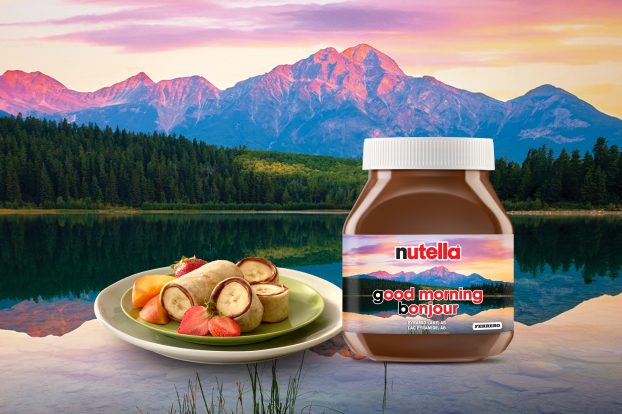In the digiverse, harnessing in-depth user data and passion points within social groups is providing media with more surgical methods of capturing the attention of the right group – and a reality check on who you’re actually connecting with
Online social media networks are doing for advertisers what behavioural targeting tactics did for SEM: making it increasingly easier to carve out niche audiences based on people’s online behaviour.
Facebook, MySpace and Twitter networks allow targeting based on specific information as opposed to data on groups defined by broad demographics. User-input info includes location, keywords, relationship status, age, education, interests, gender, workplace and languages, and social networks with more distinct purposes can provide advertisers with even more in-depth user-supplied data to inform precise messaging match-ups.
Speaking of ideal hook-ups, online dating sites, such as Vancouver-based Plenty of Fish (POF), are potential goldmines for data points based on even more extensive intel provided by daters when they sign up in search of that perfect match. Since starting just over seven years ago, the free-to-join dating destination has risen through the ranks to become one of the top hook-up sites in Canada and Great Britain, and the number-one dating dotcom in the U.S.
It boasts more than 2.1 billion page views, 90 million visitors, a 15% turnover of new visits per month and 2.4 million members in Canada alone. That translates into a database chock-full of valuable user information stemming from data like age, hair colour, location, interests, favourite film genre and, in the case of POF, even the results of a psych test.
‘Social media has given consumers a reason to input really rich data points that we can now target based on. That’s really what the game-changer was,’ says Nick Barbuto, director of interactive solutions for Cossette.
‘You think about Hotmail or Yahoo in the early days,’ he says. ‘Sure, they had a ton of people and they had some social elements to them, but they never gave users a real reason to say that my favourite TV show was Lost or my favourite kind of vacuum is a Dyson. Even if they did give you that opportunity, there wasn’t really much of a reason for you to be accurate about that.’
Barbuto says that Cossette has worked with POF and paid sites like Lavalife based on the insights gleaned from their user bases.
The agency used Lavalife to target based on demographic info, as well as activities and hobbies for Durolane, a hip and knee pain medication. If a Lavalife member indicated that they were into dancing, they were served with Durolane creative executions speaking to hip and knee pain resulting from dancing. Brands like Bell and Malibu Rum have similarly used POF’s targeting abilities to run campaigns based on particular information like profession and drinking habits.
At the end of last year, POF further opened up its database with a self-serve ad platform that lets marketers hyper-target based on sets of extremely specific criteria that come out of the multiple data points it collects from its users. POF partners can use a demographic search tool to determine a breakdown of the site’s 100 data points and target ads accordingly, confident that they have a very clear idea of exactly who they will reach.
For example, an advertiser could place an ad intending to reach shy women between the ages of 25 and 34 who are small business owners living in Vancouver.
‘‘Do you like crossword puzzles?’ is one of our psychology test questions – we can tell if you’re shy or not, and that has a dramatic impact on what you will buy and what kind of person you are,’ says Plenty of Fish CEO Markus Frind. ‘The more data we give to advertisers, the more targeted they can make their message, or they can exclude people that will never buy their product or service.’
So far, the self-serve ad platform has been a success. Since its inception, POF has seen its CPMs per IAB unit more than double. The site is working to make its hyper-targeting offering even more attractive to potential partners by working with brands to track, test and then tweak sets of creative based on their resonance with particular demographic groups.
‘Rather than doing focus groups we can really sit there and say ‘Here’s the demographic breakdown of who’s engaged with your ad,” says POF VP Kim Kaplan. ‘They might want to be targeting single mothers over 40, but three of their creative [executions] are really only engaging users under 30.’
Though social networking sites like Facebook, MySpace and Twitter might not be able to offer advertisers access to a large database of dependable data points like POF’s, they allow advertisers to go after many niche social groups with a propensity to engage with a particular promotion based on more qualitative aspects.

Canwest’s Dose.ca is an example of a brand that’s successfully leveraged Facebook’s fan pages to capture an 18- to 34-year-old audience passionate about entertainment news and celebrity gossip. Celeb-gawkers can check out and comment on the latest tidbits, complete with regular updates of the most recent pop culture headlines.
Just launched in September, Dose has managed to gain entry into an exclusive group that can boast a Facebook fan base of over 10,000, a claim that only 4% of fan pages can make, according to a November study by Toronto-based Sysomos.
Dose is letting its own advertising partners reap the benefits it’s seeing on Facebook, offering sponsorship of logo areas as well as the opportunity to collaborate on site-specific offers. At press time, it housed an exclusive Dose.ca offer for a chance to win a trip to the Telus World Ski & Snowboard Festival in Whistler, B.C.
‘The Facebook demo is genuinely quite interested in Dose’s content, which is entertainment, celebrity and music-focused,’ says Ray Philipose, VP strategy and product development, Canwest Digital Media. ‘When people see a headline they comment on it or they ‘like’ it, and that action gets indicated through their Facebook feed and other people notice it. I think that’s what’s driving the fan growth behaviour. Our success is all about passion point. People are genuinely excited about this stuff, so away it goes.’
Toronto-based social engagement agency Rocket XL knows all about the benefits of using social media to engage audiences around passion points. It’s their bread and butter. After pre-release screenings for Tim Burton’s movie 9 confused viewers because it didn’t adequately explain the fictional universe, Rocket XL was tasked with creating a backstory told entirely through Facebook, Twitter, Flickr, blogs and a microsite.
To turn the tide towards more favourable buzz, Rocket XL managing director Ian Barr ‘went online and identified people that were within these passion point segments – Tim Burton fans, steampunk fans, fans of anime – and we qualified them using criteria that go extremely deep.’
To ensure maximum ROI, some social media math was in order, says Barr. ‘Let’s say we’re talking about bloggers: what’s the reach, how frequently do they post, how many ingoing links do they have, what’s their social sphere like? Then we engaged them in a very authentic, one-on-one way to let them know what’s going on.

‘They wouldn’t have the mass scale, but they’re really hyper-targeted, and you know these people are going to be really rabid for this movie.’
The 9 Facebook fan page tallied around 10,000 fans, with averages of 111 comments and 141 ‘likes’ per post, while the campaign attracted 430,000 Twitter followers, 9,500 photos uploaded on Flickr, an average of 50 ‘shares’ per individual photo upload and 66,000-plus impressions from hyper-targeted influencer posts and discussions.
Another campaign engineered by Rocket XL was on behalf of Nike, targeting people passionate about golf to promote a new driver tech allowing for an adjustable head.
After examining online discussions, it was discovered that golf enthusiasts weren’t discussing, reviewing or endorsing the SQ Dymo STR8-FIT or the R9, a similar driver launched by Taylormade and Nike’s only competitor.
Early testing indicated that golf professionals and industry insiders preferred Nike’s driver, so Rocket XL decided to take advantage of the lack of online chatter to hyper-target more than 250 key influencers on passion points including golf, sports and men’s interests and seed it to generate organic reviews, helping Nike own the online convo while getting the club in the hands of golf fans. The ‘8>9 Challenge’ (STR8-FIT versus R9) increased awareness across social media channels, asking them to test the products and share their thoughts, good or bad, with their readers.
The effort reared successful results including 143 third-party placement reviews across blogs and sites like YouTube and Twitter, resulting in more than seven million earned impressions, 30,000 RSS subscribers and 143,000 syndications. Eight out of the top 20 organic search results for the STR8-FIT post campaign were ‘8>9 Challenge’ participants, and 93% of the resulting sentiment was positive or neutral, generating positive comparison reviews for Nike’s driver.
Online campaigns are traditionally measured by mass metrics like reach, impressions and click-through rates. So what’s the math behind reaching out via very tailored messaging to niche social groups online?
‘A big pain point for me is when people take [for example] the audience reach of a blogger and compare it to the reach of a newspaper,’ says Barr. ‘Those are two completely different things. Let’s say you’re working for a spirits company and you get a hit on an influential person online, [and] all they talk about is spirits – that has a deeper value then say getting a hit in the Sun. They’re having discussions with their fans around the topics that they’re interested in, so you’re creating an additional layer of engagement.’
In terms of applying a standard social media metric to calibrate value of such custom programs, the ROI equation isn’t an easy one – with so many possible aspects to be measured across different social media sites – and as such, no solid metric has yet been devised. But, the debate is on and solutions are being posited.
Italian digital media shop FrozenFrogs is one agency that’s attempting to set a benchmark for understanding if fans are really engaged with brands on Facebook and, if so, how much. The Facebook Engagement Rate (FER) is based on a study of active business pages and the behaviour of their fans, and calculates the percentage of fans that give feedback, including comments and ‘likes,’ over a company update – be it a status update or a new post.
The problem, of course is that the formula behind FER can’t be applied when accounting for value across a number of social websites like Twitter, MySpace, YouTube, blogs, etc.
‘Each one of those social segments has really different metrics and different levels of engagement,’ says Barr. ‘It’s like apples and oranges if you’re comparing – an influencer does a 300-word post, generates a ton of comments and a lot of people start linking to it, versus I’m on Facebook, I post a message to my fan group and then I’ve got 11,000 people commenting on it.’
Another effort comes from Irvine, CA.-based web measurement company WiseWindow. It released a tool in January called Mass Opinion Business Intelligence that extracts and analyzes opinions expressed in social media, identifies only those that are relevant to a given company and product, and then refines those opinions into actionable reports.
The tech uses a ‘domain-centric’ approach to mass opinion, scouring the internet for objective facts and qualitative subjective opinions and converts them to quantifiable structured data. Ultimately, it can present brands with information like total share of opinion, how it changes over time and how it correlates with share of market. Media companies, industry analysts and consulting firms can also monetize this data into a
revenue source by selling it to their customers as a service.
‘It allows advertisers to not just know if someone recalled their ad, but actually see if the advertising helps to change the thoughts and actions of the buyer reflected in the way they talk about the brand,’ says Marshall Toplansky, president, WiseWindow. ‘It shows if the advertising is working in the real world. Knowing their share of opinion relative to their competitors and what customers are saying they want in a given category can help advertisers make rapid changes that can ultimately impact market share.’
FrozenFrog and WiseWindow’s tools are examples of new ways to map the value intrinsic to different social media properties back to sales, but there are other, more hands-on methods. POF’s Kaplan says that she’s talked with restaurants about putting a form of DM campaign online where they can track efficiency as well as build up their database by working in a coupon element.
‘What I’ve been pitching to The Keg and Moxie’s is that you’ll actually be able to physically see a coupon, they’ll hand it in and you’ll know that it comes from POF because of a code,’ says Kaplan. ‘And you can actually track back and know their demographic information and profiling.’
She is also entertaining the notion of implementing branded gifts that POF daters can send to people they’re interested in, like chocolates or flowers.
Dose.ca measures the value of its Facebook fan page and pushes it to advertising partners much in the same way as is suggested via FrozenFrog’s Facebook Engagement rate: they monitor the conversations that are happening.
‘The key metric is the number of fans,’ says Philipose. ‘It’s not necessarily a highly data-driven decision in the sense that the engagement is quite apparent – the number of people that say ‘like,’ the number of comments, etc. And because it’s spreading virally that’s increasing the propensity of that conversation as well.’
All in all, it’s the ability to move further beyond demographic targeting, obtaining more plentiful and better quality information from increasingly robust social media networks, which makes targeting niche social groups of increasing value to advertisers.
‘People often will stop at demographic targeting in traditional media because they don’t have the ability of sub-selecting within that group on a one-to-one basis,’ says Barbuto. ‘But on the internet, we’ve been doing this for years. Search engine marketing is a perfect example of cohort marketing. Social media is just another way for us to start to reach individuals with even more data points around them.
‘We can now leverage data points from Facebook and Twitter rather than just from search alone,’ he explains. ‘The companies that have the data have a heads-up above and beyond their competition. That’s the reason why we advertise with a lot of these guys. Facebook wouldn’t be half as compelling if it didn’t have the data.’
The challenge, says Barbuto, comes down to production efficiencies from an overall campaign perspective. It’s difficult for creatives to be nimble enough time-wise and budget-wise to produce multiple creative iterations targeted to multiple niche groups in a broader campaign. Instead, marketers are trying to identify the single group that has the greatest potential return on investment.
‘If you can build that business case for one or two niches, I think clients are pretty receptive to that,’ says Barbuto. ‘It’s just when you start to do it upon all the possibilities, or start to test which of those 100 variations are going to work best, that’s where most marketers throw their arms up and say it’s too complicated or it’s too expensive.’
By exploiting insights from ROI-potent niche groups, brands can effectively leverage social media further to establish relationships with their customers that could then allow them to determine value in the space based on the length of engagement. That, says Barr, could be the undiscovered country when it comes to social media channels – the area with the most potential for advertisers to exploit going forward.
‘You talk about the average lifetime value of a consumer, that’s something I think has a lot of potential for social media,’ says Barr. ‘If you encourage someone to opt in to an email, which is relatively easy to do through social media campaigns, what’s the lifetime value of that consumer once they’re in your ‘purchase funnel’ over time? I would love to see a metric where we can start to say, ‘if people are engaged constantly over time, we know that there’s an inherent value of X, Y and Z.”























